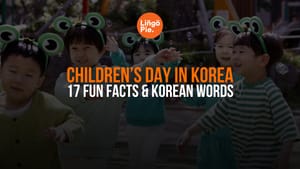In Korean culture, familial relationships are intricately woven into the fabric of society, with specific terms and expressions used to denote respect, hierarchy, and closeness. From addressing siblings to extended relatives, understanding the nuances of family names in Korean Language is essential for effective communication and social interactions. Let's explore these dynamics, including the context of gender-specific terms used among siblings.

Siblings:
In Korean, the term for siblings is "형제" (hyeongje) for brothers and "자매" (jamae) for sisters. However, there's a gender-specific aspect to the terms used to address older siblings:
For Brothers:
- 형 (hyeong): Used by younger brothers to address older brothers.
- 오빠 (oppa): Used exclusively by younger sisters to address older brothers.
For Sisters:
- 누나 (nuna): Used by younger brothers to address older sisters.
- 언니 (eonni): Used exclusively by younger sisters to address older sisters.
These terms reflect not only the sibling relationship but also the societal norms surrounding gender and hierarchy within the family structure. For example, the term "oppa" carries a sense of affection and closeness, often used by younger sisters to express fondness for their older brothers.
Father's Family Members:
- 아버지 (abeoji) - Father
- 어머니 (eomeoni) - Mother
- 할아버지 (halabeoji) - Paternal Grandfather
- 할머니 (halmeoni) - Paternal Grandmother
- 아버님 (abeonim) - Father (respectful)
- 어머님 (eomeonim) - Mother (respectful)
Read Also:


Mother's Family Members:

- 엄마 (eomma) - Mother
- 아빠 (appa) - Father
- 할머니 (halmeoni) - Maternal Grandmother
- 할아버지 (halabeoji) - Maternal Grandfather
- 외할아버지 (oehalabeoji) - Maternal Grandfather (polite)
- 외할머니 (oehalmeoni) - Maternal Grandmother (polite)
Extended Family Members:
- 큰 이모 (keun eemo) - Aunt (older sister of parent)
- 작은 이모 (jageun eemo) - Aunt (younger sister of parent)
- 큰 아버지 (keun abeoji) - Uncle (older brother of parent)
- 작은 아버지 (jageun abeoji) - Uncle (younger brother of parent)
- 큰 삼촌 (keun samchon) - Uncle (older brother of one's parent)
- 작은 삼촌 (jageun samchon) - Uncle (younger brother of one's parent)
- 조카 (joka) - Niece/Nephew
- 사촌 (sachon) - Cousin
Understanding the gender-specific terms used among siblings and the appropriate terms for addressing uncles offers insight into the dynamics of Korean family relationships. These terms not only convey familial ties but also reflect cultural norms and expectations regarding respect and hierarchy based on gender, age, and familial relation.
Incorporating Lingopie into the discussion of Korean family dynamics can enhance language learning by providing context-rich content that showcases real-life interactions and cultural nuances. By watching Korean dramas or movies on Lingopie, learners can observe how family members address each other, including the usage of specific terms for siblings, parents, and extended relatives. Lingopie's immersive experience allows learners to grasp the subtleties of Korean familial relationships, reinforcing vocabulary acquisition and cultural understanding in an engaging way. Additionally, Lingopie offers subtitles and language tools to aid comprehension, making it an invaluable resource for learners seeking to deepen their knowledge of Korean family names and societal norms while honing their language skills.
In conclusion, navigating Korean family dynamics involves more than just linguistic proficiency; it requires an understanding of the cultural nuances embedded within familial relationships. By recognizing and respecting the gender-specific terms used among siblings and extended relatives, individuals can navigate social interactions with grace and sensitivity, strengthening familial bonds and preserving cultural traditions for generations to come.


![Family Members in Korean [Beginners Guide]](/blog/content/images/size/w1200/2024/04/IMG_3113.png)





![11+ Best Shows On Netflix To Learn Korean [2025]](/blog/content/images/size/w300/2025/05/Best-Shows-On-Netflix-To-Learn-Korean.jpg)

